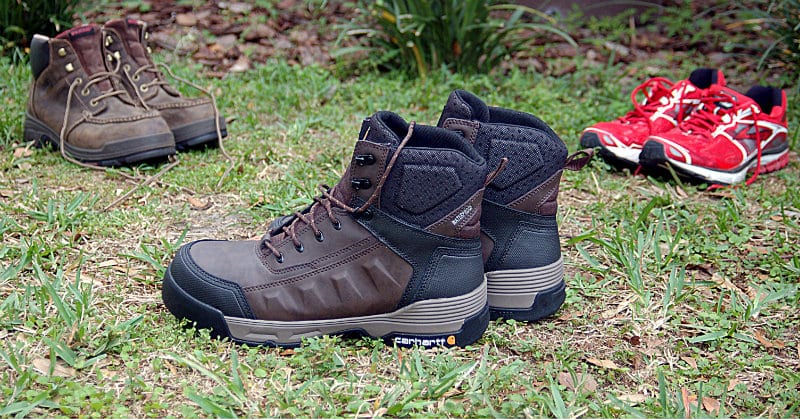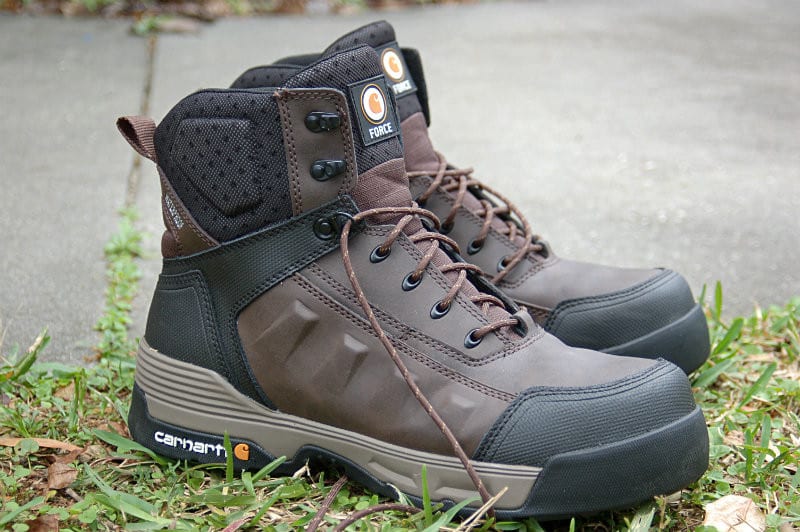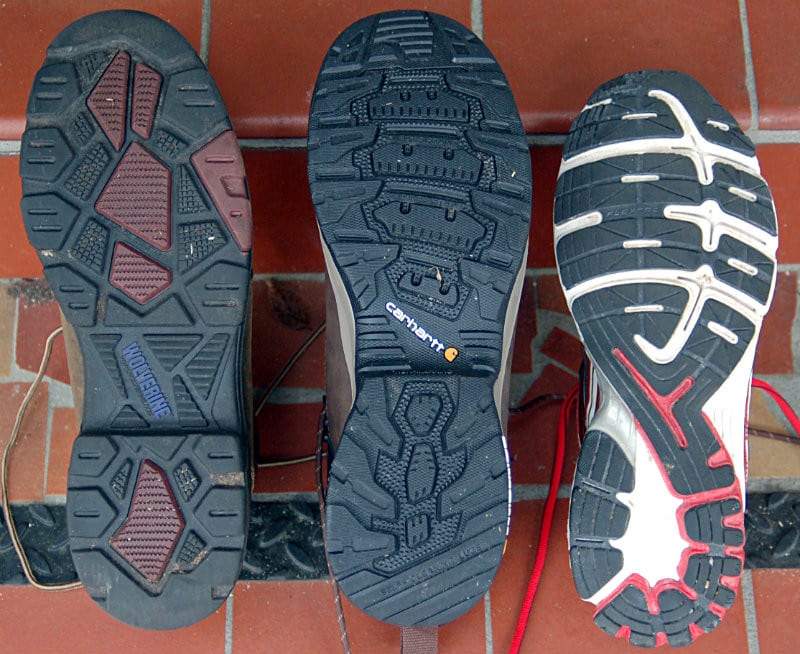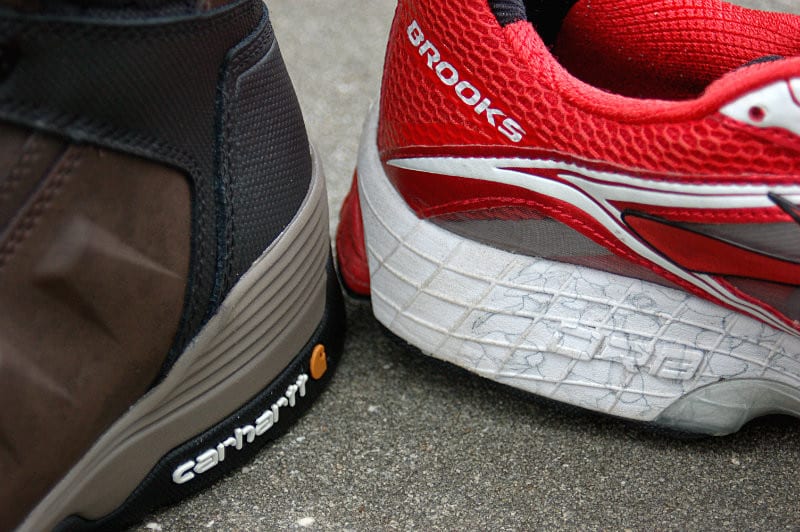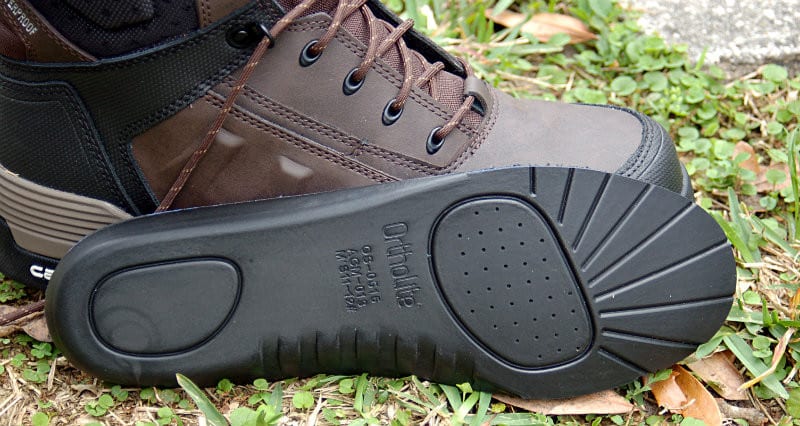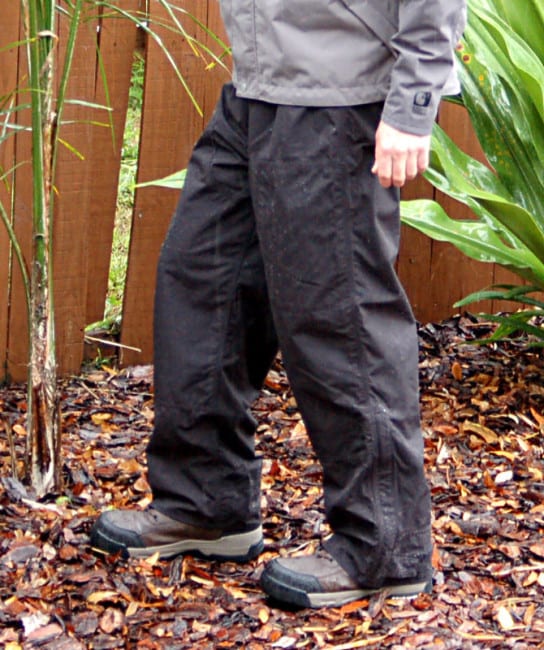Warm-up with a 2.4-mile swim. Jump on your bike for 112 miles. Then the race actually begins when you start the 26.2-mile run. Oh, and you’ve got 17 hours to finish all of it. Want to win? You’ll need to shoot for just over 8 hours. That’s the essence of what it means to be an Ironman Triathlete. When I received the new 6″ Carhartt Force Work Boot, I warned them that as an Ironman, I could tell them if they lived up to the claim of “Feels like a running shoe. Works like a boot.” Carhartt welcomed the challenge and the perspective.
If you’re not into triathlon (yeah, I know, it’s probably just me), then you may not know that the run happens at the end of the race. It’s actually where the race is won or lost. Last year, Miranda Carfrae overcame a deficit of over 20 minutes to win the Ironman World Championship on the run. As you can imagine, it’s not how good you feel when you start the swim, it’s your ability to keep going and be comfortable at the end of the marathon.
It’s the same way with work boots. Most of them feel great when you put them on. It’s after 8 or 10 hours that make the difference of being able to keep working or having to call it a day. How your feet feel makes a difference. Let’s face it, if we’re going to shell out $150 – $200 for work boots, we expect them to be able to work as long as we do.
Editor’s Note: Check out our best work boots review article for our favorite products for all applications.
6″ Carhartt Force Work Boots with Composite Toe Features
The 6″ Carhartt Force Work Boot is available in either a soft toe (CMA6046) or composite toe (CMA6346). With only $5 in price difference and OPE season coming up, I absolutely wanted the composite toe. The way this boot gets Carhartt’s Force designation is through its Fast Dry moisture-wicking material. For guys that tend to have sweaty feet, well, your wife is going to appreciate that feature when you get home. Even if the boot gets wet inside from the elements, this should help pull that moisture out better to make the rest of the day easier to deal with.
Brown coated leather combined with Ariaprene breathable foam and Storm Defender membrane create a boot that is both waterproof and breathable. Carhartt’s EVA foam midsole and Ortholite insole combine to offer comfort beyond what we typically expect in a work boot.
I have to say that this sounds almost too good to be true. Has Carhartt really turned a corner in work boot innovation or are there some tradeoffs that had to be made?
The Big 3 of Boots: Fit, Comfort, and Appearance
How 6″ Carhartt Force Work Boots Fit
Let’s start with the standard question of fit. Work boots tend to run a 1/2 size larger than your tennis shoes. I wear a 12-1/2 for a running shoe, so I went with the size 12 and found it a near-perfect fit for me. There’s room in the upper for my ankle to move and the boot to breathe. This occurs without letting my foot slide around in the base.
What about the idea of fitting like a running shoe?
The big, massive, huge, ginormous (whatever) difference between running shoes and work boots is in a secure fit around the footbed itself. When you’re running for 3 hours, or 30 minutes for that matter, what you don’t want is blister-causing movement around your foot. Traditional work boots do allow for some movement there. When I put on the Carhartt Force Work Boots, the very first thing I noticed is how secure they wrap around my foot. This is a good thing for someone used to being comfortable in running shoes.
The Sole Issue of Carhartt Force Work Boots
A look at the bottom of the boot will show you what I’m talking about. The toe box is still wide enough to accommodate the swelling that your feet do naturally throughout the day. The heel still allows for the traditional amount of room. Notice though how the Carhartt Force Work Boot comes in tighter around the midsection. This is what brings in that extra security around your foot.
Let me briefly turn towards comfort. This style of boot feels a bit strange if you don’t normally wear a shoe designed this way. It may take some time to decide if you really like it. However, pros who walk consistently throughout the day should appreciate this kind of fit.
The Comfort of Carhartt Force Work Boots
Carhartt builds most of the features of their Force Work Boots around comfort. Certainly, anything that keeps our feet drier or helps them dry when wet is welcome. For that reason, I really like the combination of waterproof construction, breathability, and moisture-wicking from the Carhartt Force and Storm Defender technologies. The season hasn’t given us a lot of nasty conditions to test these in. However, combining Carhartt Force Work Boots with their Shoreline Vapor Rain Gear resulted in dry feet the few times I “played” in the rain.
In staying within the running shoe frame of mind, the EVA foam and Ortholite inserts really intrigued me. I noted a difference when comparing the midsoles of Carhartt Force Work Boots to my Wolverine EPX Cabors. The Force Boots are softer. While not as soft as the EVA foam in my running shoes though, they provided ample cushioning. In fact, the Carhartt Force work boots had much more than my others. Bigger guys will notice a softer feel when walking and standing in them.
The Downside of Lower Density Foam
There’s a downside to lower density EVA foam though. Running shoes have to be replaced every 300 – 500 miles or at least every 6 months. It’s all because of the breakdown of that foam. Once it’s no longer doing its job, continued use can lead to injury. Now, I’d expect the density of Carhartt’s foam to last longer than 6 months because of the density, but you’ll likely want to at least try on a new pair to feel if there’s any noticeable difference around the year mark if you’re wearing these every day.
The Ortholite insoles compliment that EVA foam. Most of the guys that I work around already get insoles to put in their boots as it is. Many runners will also use inserts if they’re larger guys or going for longer distances. The insoles add several extra millimeters of cushioning around the areas that experience the most pressure and improve the comfort over the course of a long day.
So the bottom line on comfort – do all of those features work on the Carhartt Force Work Boots? Yeah, they do actually.
Appearance
If I’m going out with the guys for a drink after work or meeting my Lady for dinner, I’ve got to know if my boots have enough style for the setting. When it comes to appearance, Carhartt Force Work Boots are going to need to stay on the jobsite. That’s not to say that they’re ugly. Not by any means. These boots are designed to function well in less than desirable settings.
Like all work boots, they’re got bulky soles (even for the lightest boots that Carhartt makes). The materials and stitching are selected more because of how they work to keep you comfortable than for decorative appeal.
Conclusions and Parting Shots
The only question that I have left about Carhartt Force Work Boots is their durability. They certainly appear to have a durable design. Time will tell whether the combination of materials and technologies will hold up to the tough environment of the jobsite though.
Does it actually feel like a running shoe?
Sort of. It certainly fits like a running shoe. Out of the box and after a few weeks of wear, it’s a bit too stiff to say that it feels like a running shoe. In order to keep the durability of the outsole higher than that of a running shoe, it is made of a more dense, stiffer material that won’t loosen up the way a pair of running shoes will.
On the other hand, my running shoes certainly don’t feature oil and slip-resistant soles, nor do they have self-cleaning lugs. Carhartt Force Work Boots should last longer than the 6 months I get out of my running shoes though. Compared to a traditional work boot, the fit and additional cushioning that comes from the EVA foam and Ortholite insole go a long way to improving what we can expect from a boot that I need to spend 10+ hours a day in.

